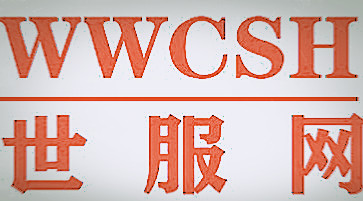The Biggest Textile Mill In India Went Bankrupt, And 12 Thousand People Lost Their Jobs.
India's official media reported that the largest textile manufacturer, the rock industry, was submitted to bankruptcy proceedings and may be liquidated. Some 20 thousand and 500 shareholders, including public financial institutions and retail investors, are watching the company's losses.
The company's business involves three major textile processing chains, namely, spinning, weaving and garments. Personnel size and production equipment are also leading the same industry level in India. It is one of the top textile enterprises in India. As of March 31, 2017, there were 11759 full-time employees in the company, which was quite large. If businesses fail, that means nearly 12 thousand people will lose their jobs.
Due to various factors, China's textile and dyeing industry has weakened its competitive edge, and textile enterprises such as India, Vietnam and Pakistan have been developing vigorously. In particular, India has many advantages, such as low labor costs, abundant cheap labor, suitable climate conditions, suitable for cotton and linen growth, and the comprehensive opening of the India market to the United States, the European Union and Japan. It's just that he has seized the opportunity of development and developed step by step to become a major textile enterprise in India. So why did he become bankrupt and liquidated?
According to industry analysis, alco is also a microcosm of India's textile industry. Its bankruptcy has sounded the alarm for India and even China's textile enterprises.
Production costs remain high, and the development of textile enterprises is limited.
Although India is cheap and raw materials are dominant, production costs remain high. The development of its textile machinery plate is backward. Most of the equipment is imported from abroad, and the cost of import is relatively high. Because of the serious shortage of electricity, its electricity cost is much higher than that of other countries. In addition, the past two years, the local government has also begun to attach importance to environmental protection issues, the development of textile enterprises is restricted.
Lack of awareness of strategic development and no economies of scale.
The textile industry in India is very competitive. Especially in the upstream enterprises, because of the lack of strategic development awareness, often "price war", profits are seriously squeezed, many enterprises are closed down, the industry's investment enthusiasm is also becoming weaker and weaker. Small and medium enterprises account for the majority. Due to lack of guidance, economies of scale are not formed, and the ability to resist risks is weak.
The overall quality of labor is low, and enterprises lack the ability to innovate.
Under the increasingly important situation of scientific and technological innovation, India's labor force is cheap, but its overall quality is relatively low, and there is a general lack of technical personnel. Textile enterprises can easily be eliminated if they can not improve their creativity and develop new technologies and products.
Thus, the failure of arrow is closely related to the economic environment of India. For a large enterprise, perfect textile chain, favorable environment, abundant raw material resources, long term accumulation of technical strength, high-quality textile personnel and marketing professional team are indispensable. Any problems in any link can lead enterprises to decline.
This is an era without innovation and death. The traditional textile industry needs continuous innovation, and the market can be occupied by new products and technologies. Besides, attention should also be paid to speed and service. Facing the increasingly globalized and open textile market, any country or any textile enterprise is facing opportunities and challenges. In the next few years, the speed of reshuffling will be faster and faster, no matter in foreign countries or in China.
- Related reading

Textile And Apparel: China's Market Is Still The Most Robust Growth Point Of International Brands.
|
Shaanxi Functional Textiles Quality Supervision And Inspection Center Unveiled
|
Tianhong Textile (02678.HK): Expected Profit Attributable To Medium Term Shareholders Will Decrease By 20-25%
|- market research | What Is The Purpose Of "Flying Alone" From The Parent Company's Independent Ghost Tiger Tiger?
- Expert commentary | The Day's Fashion Performance Fell And Fell, But Investment Bank's Securities Earned 34 Million.
- City Express | Warning: No One Was Injured At The Scene Of A Fire At The Workshop Of A Textile Company In Tongxiang.
- Instant news | Headlines: Environmental Protection To Ban 21 Printing Enterprises, The Finishing Industry Has Been Pushed To "Cusp"!
- Daily headlines | Trade War: Experts Analyze The Essence Of Sino US Trade War And Reconstruct China's Competitiveness In The Future
- Daily headlines | In The Past 60 Years, Textile Waste Has Increased By 811%.
- market research | Gucci Is Getting Older, The Impact Of Innovation Has Not Yet Been Completely Released.
- News Republic | In The First Half Of The Year, The US Forecast Was Expanded, But It Still Had The Opportunity To Turn It Around.
- neust fashion | Champion Salute The History Of The Launch Of The 100 Year Old Century Collection
- Expert commentary | Supply Support, VS Demand Suppression, Ethylene Glycol Dilemma
- Textile And Apparel: China's Market Is Still The Most Robust Growth Point Of International Brands.
- Shaanxi Functional Textiles Quality Supervision And Inspection Center Unveiled
- Tianhong Textile (02678.HK): Expected Profit Attributable To Medium Term Shareholders Will Decrease By 20-25%
- Helan County: "Four Intensification" To Promote The High Quality Development Of Textile Industry
- In The Past 60 Years, Textile Waste Has Increased By 811%.
- Provinces And Cities Bright Half Year Report Card "Along The Way" Along The Main Position Of Foreign Trade
- Jiahua Energy (600273): Controlling Shareholder's Lifting Of Pledge 75 Million Shares
- Jin Yu Che Cheng (000803): Semi Annual Disclosure Date Extended To August 31St
- Provinces And Cities Bright Half Year Report Card "Along The Way" Along The Main Position Of Foreign Trade
- Review Of China's Dyestuff Industry In 2018 And Analysis Of Industry Development Prospects